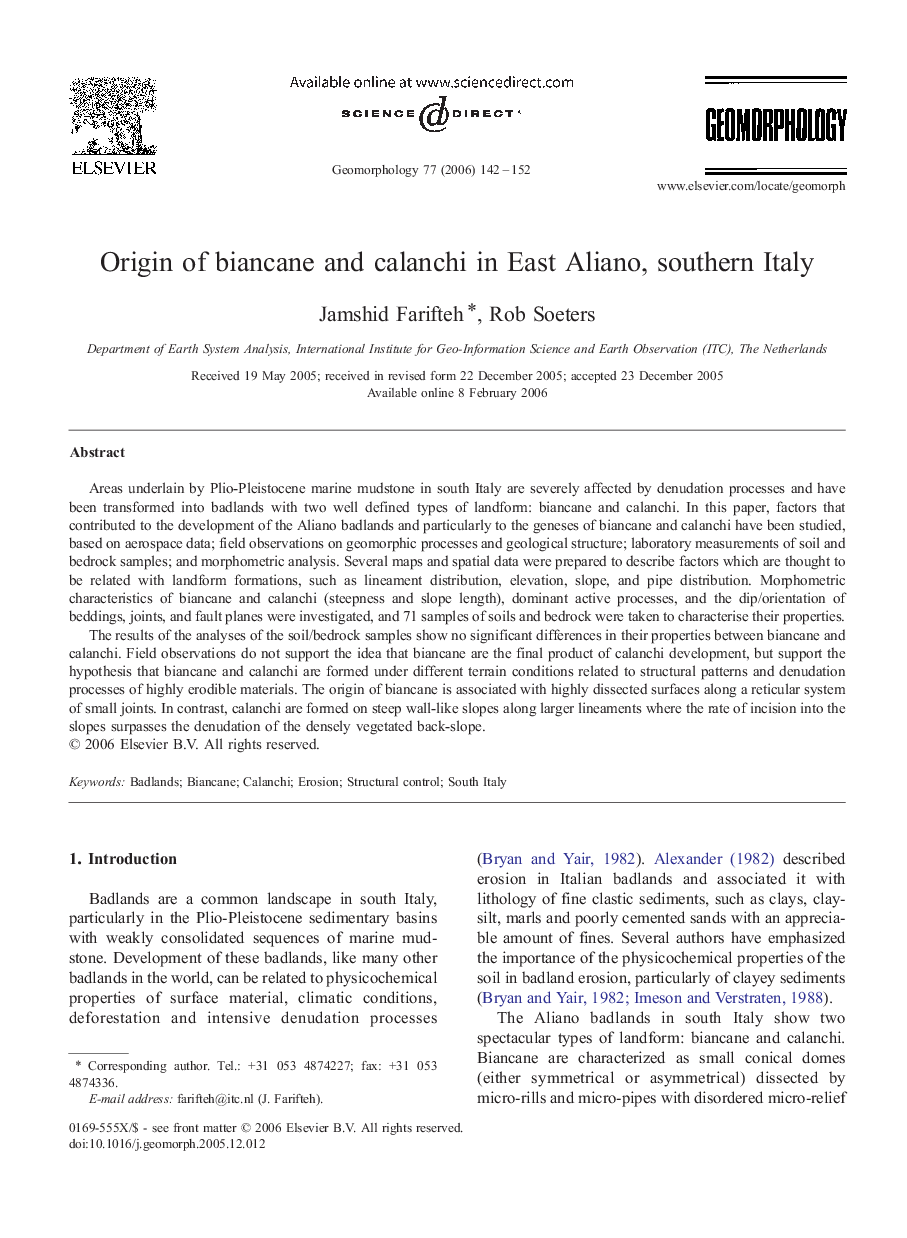| Article ID | Journal | Published Year | Pages | File Type |
|---|---|---|---|---|
| 4687512 | Geomorphology | 2006 | 11 Pages |
Abstract
The results of the analyses of the soil/bedrock samples show no significant differences in their properties between biancane and calanchi. Field observations do not support the idea that biancane are the final product of calanchi development, but support the hypothesis that biancane and calanchi are formed under different terrain conditions related to structural patterns and denudation processes of highly erodible materials. The origin of biancane is associated with highly dissected surfaces along a reticular system of small joints. In contrast, calanchi are formed on steep wall-like slopes along larger lineaments where the rate of incision into the slopes surpasses the denudation of the densely vegetated back-slope.
Related Topics
Physical Sciences and Engineering
Earth and Planetary Sciences
Earth-Surface Processes
Authors
Jamshid Farifteh, Rob Soeters,
